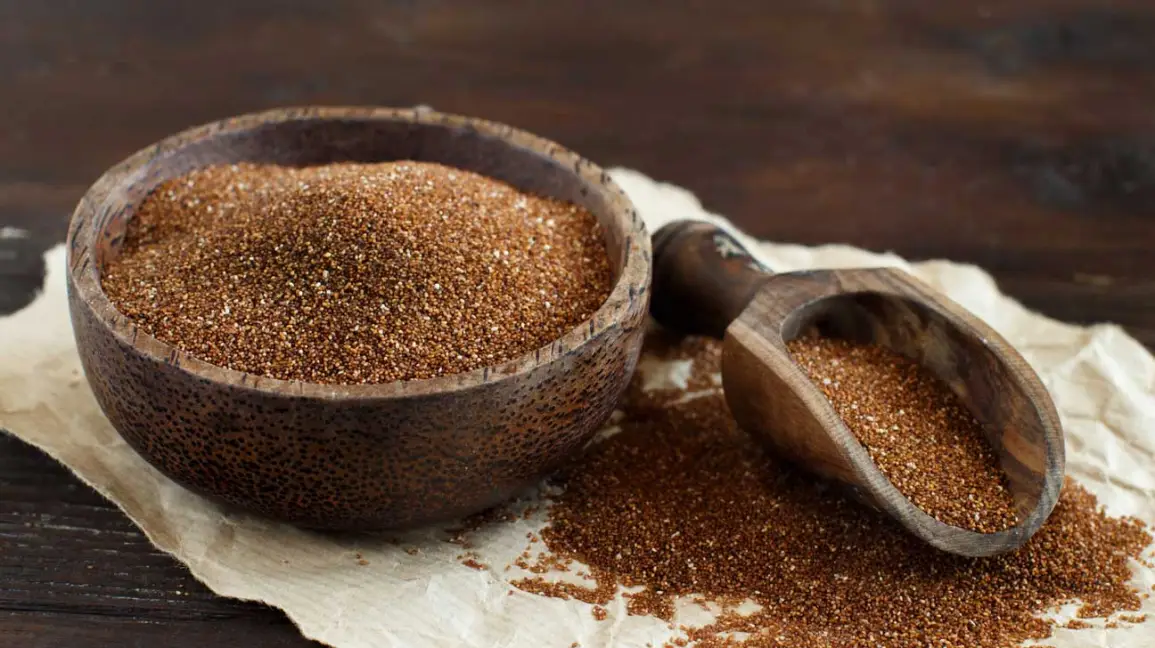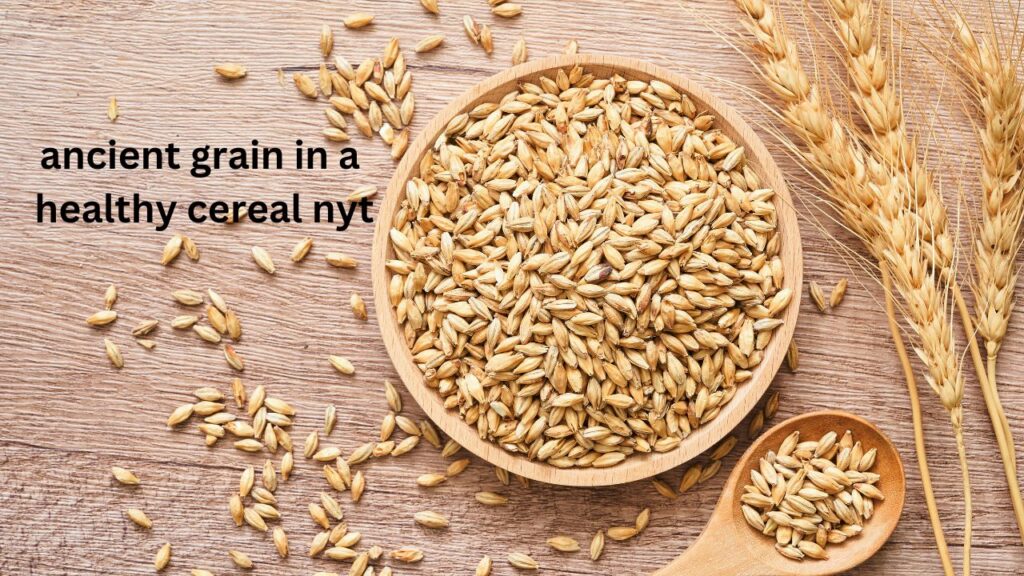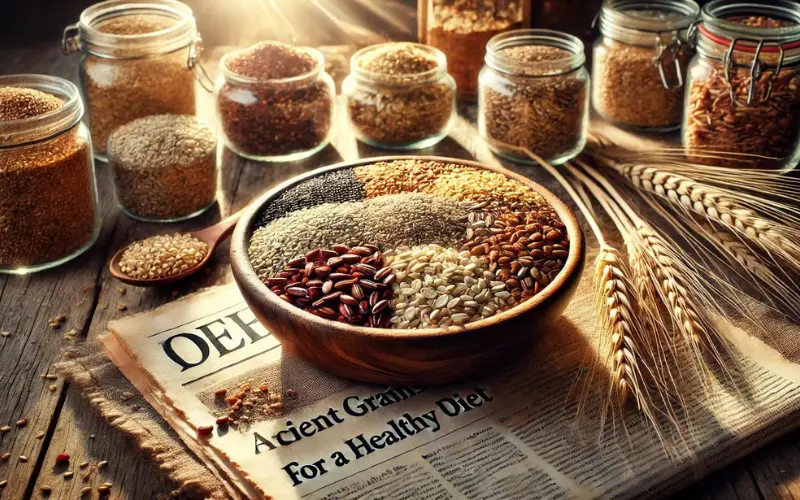When you hear the term “ancient grain in a healthy cereal,” you might wonder what makes it so special. Ancient grains are old types of grains that have been around for thousands of years, and they are making a big comeback in modern cereals. The New York Times has highlighted how these grains are packed with nutrients and can be a great choice for a healthier breakfast.
Incorporating ancient grains into your cereal can be a smart way to boost your diet. These grains often have more fiber, vitamins, and minerals compared to more common cereals. By choosing cereals with ancient grains, you’re not just enjoying a tasty breakfast but also giving your body a nutritious start to the day.
What Are Ancient Grains in a Healthy Cereal?
Ancient grains are old types of grains that have been used for thousands of years. They are different from the regular grains we see in most cereals. Examples of ancient grains include quinoa, farro, and amaranth. These grains have been enjoyed by people throughout history for their tasty and nutritious qualities.
In a healthy cereal, ancient grains can offer more vitamins and minerals than modern grains. They often have a unique texture and flavor that can make breakfast more interesting. When you read about “ancient grain in a healthy cereal” in the New York Times, it’s because these grains are packed with good stuff for your body.
Adding ancient grains to your cereal means you’re choosing something that’s been loved for a long time. These grains bring a lot of health benefits and can help you start your day in a great way. So, if you’re looking for something special for breakfast, consider cereals with ancient grains.
Why Choose Ancient Grains for Your Breakfast
Choosing ancient grains for breakfast can be a smart move. Ancient grains are often richer in fiber, which helps keep you full longer. This means you’re less likely to feel hungry before lunchtime. Plus, these grains can provide extra vitamins and minerals that help keep your body strong and healthy.
Another reason to choose ancient grains is their unique taste. They add a delicious and different flavor to your cereal. This variety can make your breakfast more exciting and enjoyable. The New York Times talks about how these grains can be a great addition to a healthy diet.
Eating ancient grains in the morning also means you’re going for something that’s been enjoyed for centuries. It’s a way to connect with old traditions while taking care of your health. So, next time you pick a cereal, think about choosing one with ancient grains for a tasty and nutritious breakfast.
The Benefits of Ancient Grain in a Healthy Cereal
The benefits of having ancient grain in a healthy cereal are quite impressive. First, ancient grains often have more protein than regular grains. Protein helps build and repair muscles, making it an important part of a balanced diet. This extra protein can be especially helpful if you’re active or looking to stay fit.
Additionally, ancient grains usually contain more fiber. Fiber helps with digestion and keeps you feeling full. This can be a great help if you want to avoid snacking too soon after breakfast. The New York Times has noted how cereals with ancient grains can be a better choice for a healthier diet.
Another benefit is the wide range of nutrients these grains provide. Ancient grains often have unique minerals and antioxidants that support overall health. By choosing a cereal with ancient grains, you’re adding valuable nutrients to your diet in a tasty and easy way.
How Ancient Grains Improve Your Morning Meal
Ancient grains can make your morning meal much better. They bring extra nutrients to your cereal that regular grains might not have. This means you start your day with a more balanced meal. The New York Times has highlighted how these grains can be a great way to boost the healthiness of your breakfast.
Adding ancient grains to your cereal can also make your breakfast more filling. The extra fiber in these grains helps keep you satisfied. This can prevent those mid-morning hunger pangs and keep you focused until your next meal. It’s a simple change that can have a big impact on how you feel during the day.
Furthermore, the unique taste of ancient grains can add a fun twist to your breakfast routine. Instead of the same old flavors, you get to enjoy something new and interesting. This variety can make eating breakfast something to look forward to each day.
The New York Times on Ancient Grain in a Healthy Cereal
The New York Times often writes about the benefits of ancient grains in cereals. They highlight how these grains can offer better nutrition compared to regular cereals. Ancient grains are praised for their high fiber content and unique health benefits, making them a popular choice for a healthier diet.
In their articles, the New York Times explains that ancient grains have been around for centuries and are known for their rich nutrient profile. This makes them a smart choice for those looking to improve their breakfast. The emphasis is on how these grains contribute to a balanced and nutritious start to the day.
When you read about “ancient grain in a healthy cereal” in the New York Times, it’s clear that these grains are valued for more than just their taste. They bring added health benefits that can support a better lifestyle. So, following their recommendations can lead you to better breakfast choices.
Top Ancient Grains to Look for in Healthy Cereals

When searching for cereals with ancient grains, some types stand out. Quinoa is a popular choice because it’s packed with protein and fiber. Another great option is farro, which has a nutty flavor and a good amount of vitamins. Amaranth is also worth considering for its rich nutrient profile and interesting texture.
Spelt is another ancient grain that adds a wholesome touch to cereals. It has a unique taste and is rich in nutrients. Teff is a tiny grain that packs a powerful punch of vitamins and minerals. Each of these grains can make your cereal healthier and more exciting to eat.
Including these ancient grains in your diet can provide a range of benefits. They add variety to your meals and offer nutrients that are often missing from regular cereals. Look for cereals that include these grains for a nutritious and enjoyable breakfast option.
How to Find Ancient Grain in a Healthy Cereal at the Store
Finding cereals with ancient grains at the store is easier than you might think. Start by checking the cereal aisle for options that list ancient grains on the label. Often, these cereals will highlight their key ingredients, making it simple to spot them.
Look for brands that specifically mention ancient grains in their product descriptions. Many health-focused brands offer cereals that include grains like quinoa, farro, or amaranth. The New York Times often reviews these products, so checking their recommendations can guide you to good choices.
Don’t forget to read the nutrition label to ensure the cereal has the health benefits you’re looking for. Check for high fiber content and low added sugars to make sure you’re getting a nutritious breakfast. With a little bit of searching, you can find delicious cereals with ancient grains that fit your diet.
Ancient Grain vs. Modern Grains: What’s the Difference
Ancient grains differ from modern grains in several ways. First, ancient grains have been grown for thousands of years and often retain more nutrients. They are usually less processed than modern grains, which can mean more fiber and vitamins in your cereal.
Modern grains, like wheat and rice, are often refined and stripped of some nutrients. This can lead to lower fiber content and fewer health benefits. Ancient grains, on the other hand, are celebrated for their rich nutrient profiles and can provide a more wholesome breakfast.
Choosing ancient grains over modern ones can give you more health benefits. They often have higher amounts of protein, fiber, and important minerals. If you want to add more nutrition to your diet, opting for cereals with ancient grains can be a great step.
Easy Recipes with Ancient Grain in a Healthy Cereal
Using ancient grain in a healthy cereal can lead to some tasty recipes. Try adding cooked quinoa or farro to your cereal for a boost of protein and flavor. Mixing these grains with your favorite fruits and nuts can create a delicious and nutritious breakfast.
Another easy recipe is to use amaranth as a topping for yogurt. It adds a crunchy texture and extra nutrients. You can also create a warm cereal bowl by cooking ancient grains and mixing them with milk and honey for a sweet and filling meal.
Experimenting with ancient grains in your breakfast can be fun and rewarding. These grains are versatile and can be used in various recipes to enhance your morning meal. Enjoy trying new combinations and finding what you like best.
The History of Ancient Grains in Breakfast Foods
Ancient grains have a long history in breakfast foods around the world. For centuries, people have relied on grains like barley and millet to start their day. These grains were staples in many cultures and were valued for their nutritional benefits.
In ancient times, grains were often ground into flour and used to make bread and porridge. These foods provided the energy needed for daily tasks. Over time, ancient grains fell out of favor but are now making a comeback as people seek healthier breakfast options.
Today, ancient grains are being rediscovered and included in modern cereals. This return to old traditions allows us to benefit from the nutritious qualities of these grains. Understanding their history helps us appreciate their value in today’s diets.
Why Ancient Grain in a Healthy Cereal Is Worth Trying
Trying ancient grain in a healthy cereal can be a great idea for several reasons. First, these grains offer added nutrients that are beneficial for your health. They are often richer in fiber and protein than regular grains, making your breakfast more filling and nutritious.
In addition, ancient grains can add interesting flavors and textures to your cereal. This variety can make your meals more enjoyable and keep you excited about breakfast. The New York Times often highlights how these grains can enhance your diet with their unique benefits.
Finally, trying cereals with ancient grains is a way to explore different foods that have been valued for centuries. It’s a simple way to make your breakfast healthier and more interesting. So, if you haven’t tried cereals with ancient grains yet, it’s worth giving them a chance.
Tips for Adding Ancient Grain in a Healthy Cereal to Your Diet

Adding ancient grain in a healthy cereal to your diet is easy with a few simple tips. Start by choosing cereals that list ancient grains as a key ingredient. Look for options with minimal added sugars to get the most health benefits.
Mix ancient grain cereals with your favorite fruits and nuts to boost flavor and nutrition. Experiment with different grains to find out which ones you like best. The New York Times often suggests trying a variety of ancient grains to enjoy their full benefits.
Incorporate ancient grain cereals into your breakfast routine a few times a week. This way, you can enjoy the health benefits without getting bored. With these tips, adding ancient grains to your diet can be both enjoyable and beneficial.
How Ancient Grains Support a Balanced Diet
Ancient grains can be a valuable part of a balanced diet. They are packed with essential nutrients that support overall health. These grains often have higher levels of fiber compared to modern grains, which helps with digestion and keeps you feeling full. This can be especially useful if you’re trying to maintain a healthy weight or improve your eating habits.
In addition to fiber, ancient grains provide important vitamins and minerals. For example, quinoa is rich in magnesium and iron, while farro offers a good dose of B vitamins. Including these grains in your cereal can help fill gaps in your nutrition and offer a more complete breakfast.
Adding ancient grains to your cereal is a simple way to make your meals more nutritious. By incorporating grains like amaranth or spelt, you can enjoy a variety of health benefits. This small change can make a big difference in how balanced your diet is.
The Role of Ancient Grains in Gluten-Free Diets
Ancient grains can play a significant role in gluten-free diets. Many ancient grains, such as quinoa, are naturally gluten-free. This makes them a great option for people with celiac disease or gluten intolerance. Gluten-free cereals with these grains can provide a tasty and healthy alternative to traditional options.
However, not all ancient grains are gluten-free. For instance, spelt contains gluten and should be avoided by those with gluten sensitivity. It’s important to check labels carefully to ensure that the cereals you choose are truly gluten-free.
Incorporating ancient grains into a gluten-free diet can help maintain variety and nutrition. They offer unique flavors and textures that can make your meals more enjoyable. So, if you’re following a gluten-free diet, look for cereals with suitable ancient grains to enhance your breakfast options.
Ancient Grains and Their Impact on Heart Health
Ancient grains have a positive impact on heart health. These grains are often rich in fiber, which helps lower cholesterol levels. High fiber intake is linked to a reduced risk of heart disease. Eating cereals with ancient grains can be an easy way to add more fiber to your diet.
Additionally, some ancient grains, like quinoa, contain heart-healthy fats and antioxidants. These nutrients can help protect your heart from damage and support overall cardiovascular health. By including ancient grains in your cereal, you’re giving your heart a boost with every meal.
Choosing cereals with ancient grains is a proactive step towards better heart health. These grains offer a range of benefits that support a healthy heart. Adding them to your breakfast routine can contribute to a heart-friendly diet.
Exploring Different Flavors of Ancient Grains in Cereal
Ancient grains come with a variety of flavors that can make your cereal more exciting. For example, quinoa has a slightly nutty taste, while amaranth has a mild, earthy flavor. These unique tastes can add a new dimension to your breakfast.
Trying different ancient grains in your cereal can help you discover new favorites. Farro adds a chewy texture and rich flavor, while teff offers a subtly sweet taste. Mixing and matching these grains can make breakfast more enjoyable and keep your meals interesting.
Experimenting with ancient grains also allows you to explore their diverse flavors. This variety can make your morning meal something to look forward to. So, don’t be afraid to try different ancient grains and find the ones that you like best.
How to Incorporate Ancient Grains into Your Daily Diet
Incorporating ancient grains into your daily diet is easier than you might think. Start by adding them to your breakfast cereal. You can find many cereals that already include ancient grains or mix cooked grains into your favorite cereal.
Another way to use ancient grains is by adding them to salads or soups. Quinoa and farro work well in salads, adding texture and nutrition. Cooked ancient grains can also be a great addition to soups, providing extra flavor and nutrients.
You can also use ancient grains in baking. Try adding them to muffins or bread recipes for a healthy twist. By finding creative ways to include ancient grains in your meals, you can enjoy their health benefits throughout the day.
The Environmental Benefits of Growing Ancient Grains

Growing ancient grains has several environmental benefits. These grains are often more resilient and require fewer resources than modern grains. For example, some ancient grains can grow in less fertile soil and need less water, making them more sustainable.
Additionally, ancient grains contribute to biodiversity. By growing a variety of ancient grains, farmers can help maintain a diverse ecosystem. This diversity can be beneficial for the environment and support healthier soil.
Supporting ancient grain agriculture can be a way to contribute to more sustainable farming practices. By choosing cereals made with these grains, you’re helping promote environmentally friendly farming. This small choice can have a positive impact on the planet.
The Best Ways to Cook Ancient Grains for Breakfast
Cooking ancient grains for breakfast can be simple and delicious. One of the easiest methods is to cook them like you would rice. For example, quinoa and farro can be boiled until tender and then mixed with your favorite fruits or nuts for a nutritious meal.
Another option is to make a warm cereal by simmering ancient grains in milk or water. Adding a touch of honey or cinnamon can enhance the flavor. You can also prepare ancient grains ahead of time and store them in the fridge for a quick breakfast option.
Experimenting with different cooking methods can help you find what works best for you. Ancient grains can be versatile, so don’t be afraid to try new recipes and discover the best ways to enjoy them. Cooking ancient grains for breakfast can add variety and health benefits to your morning routine.
How Ancient Grains Can Help with Weight Management
Ancient grains can be helpful for weight management. These grains are often high in fiber, which can keep you feeling full longer. This can help reduce overeating and support healthy weight control. Including ancient grains in your cereal can make your breakfast more satisfying.
Some ancient grains, like quinoa, also have a low glycemic index. This means they release energy slowly, which can help maintain steady blood sugar levels. Stable blood sugar levels can prevent cravings and help manage weight more effectively.
Choosing cereals with ancient grains is a smart strategy for weight management. The fiber and other nutrients in these grains can support your goals and help you stay on track. By incorporating them into your diet, you can enjoy a healthier and more balanced approach to managing your weight.
Ancient Grains and Their Role in Improving Digestion
Ancient grains can play a significant role in improving digestion. These grains are rich in dietary fiber, which helps promote healthy bowel movements. Fiber adds bulk to your stool and can help prevent constipation, making digestion more efficient.
Additionally, some ancient grains contain prebiotics, which are beneficial for gut health. Prebiotics support the growth of good bacteria in the digestive system. Including ancient grains in your cereal can support a healthy gut and improve overall digestive function.
Adding ancient grains to your diet is an easy way to enhance your digestive health. They offer a natural and effective way to support regular bowel movements and a healthy gut. By choosing cereals with these grains, you’re taking a proactive step towards better digestion.
How Ancient Grains Compare to Processed Cereals
Ancient grains offer a healthier alternative to processed cereals. Unlike processed cereals, which are often high in added sugars and low in nutrients, ancient grains are naturally rich in fiber, vitamins, and minerals. This makes them a more nutritious choice for breakfast.
Processed cereals can sometimes be stripped of their natural nutrients during manufacturing. In contrast, ancient grains retain their original goodness. By choosing cereals with ancient grains, you can avoid the drawbacks of processed cereals and enjoy a more wholesome meal.
Comparing ancient grains to processed cereals highlights the benefits of choosing more natural options. Ancient grains provide a range of nutrients that processed cereals often lack. For a healthier breakfast, opt for cereals that include these nutritious grains.
The Economic Benefits of Supporting Ancient Grain Farmers
Supporting ancient grain farmers can have positive economic effects. By purchasing cereals with ancient grains, you help create demand for these crops. This can support farmers who grow ancient grains and contribute to local economies.
Ancient grain farming can also be more sustainable, potentially reducing costs associated with resource use. For example, some ancient grains require less water and fewer fertilizers. Supporting these farming practices can contribute to more efficient and environmentally friendly agriculture.
Buying products made from ancient grains helps promote sustainable farming and supports the livelihoods of farmers. This economic support can be beneficial for both the farming community and consumers. By choosing these products, you’re making a choice that can have a positive impact on the economy.
The Science Behind Ancient Grains and Their Health Benefits
The science behind ancient grains reveals why they are so healthy. Research shows that ancient grains are rich in essential nutrients like fiber, protein, and antioxidants. These nutrients contribute to various health benefits, including improved digestion and better heart health.
Studies have also found that ancient grains can have a positive impact on blood sugar levels. Their low glycemic index helps maintain stable blood sugar, which is important for overall health. The nutritional profile of ancient grains makes them a valuable addition to a balanced diet.
Understanding the science behind ancient grains can help you appreciate their health benefits. These grains offer a range of nutrients that support different aspects of well-being. By including ancient grains in your diet, you’re making a choice that is backed by scientific research and beneficial for your health.
Conclusion
Ancient grains are a fantastic addition to your breakfast cereal. They bring lots of good stuff like fiber, vitamins, and minerals that help keep you healthy and full. These grains, such as quinoa and farro, not only taste great but also support your heart and digestion. By choosing cereals with ancient grains, you’re making a smart choice for a nutritious start to your day.
Adding ancient grains to your diet is easy and fun. You can enjoy them in your cereal, mix them into salads, or even use them in baking. So, next time you’re at the store, look for cereals with ancient grains to make your breakfast both tasty and healthy. You’ll be giving your body the boost it needs to stay strong and happy.










